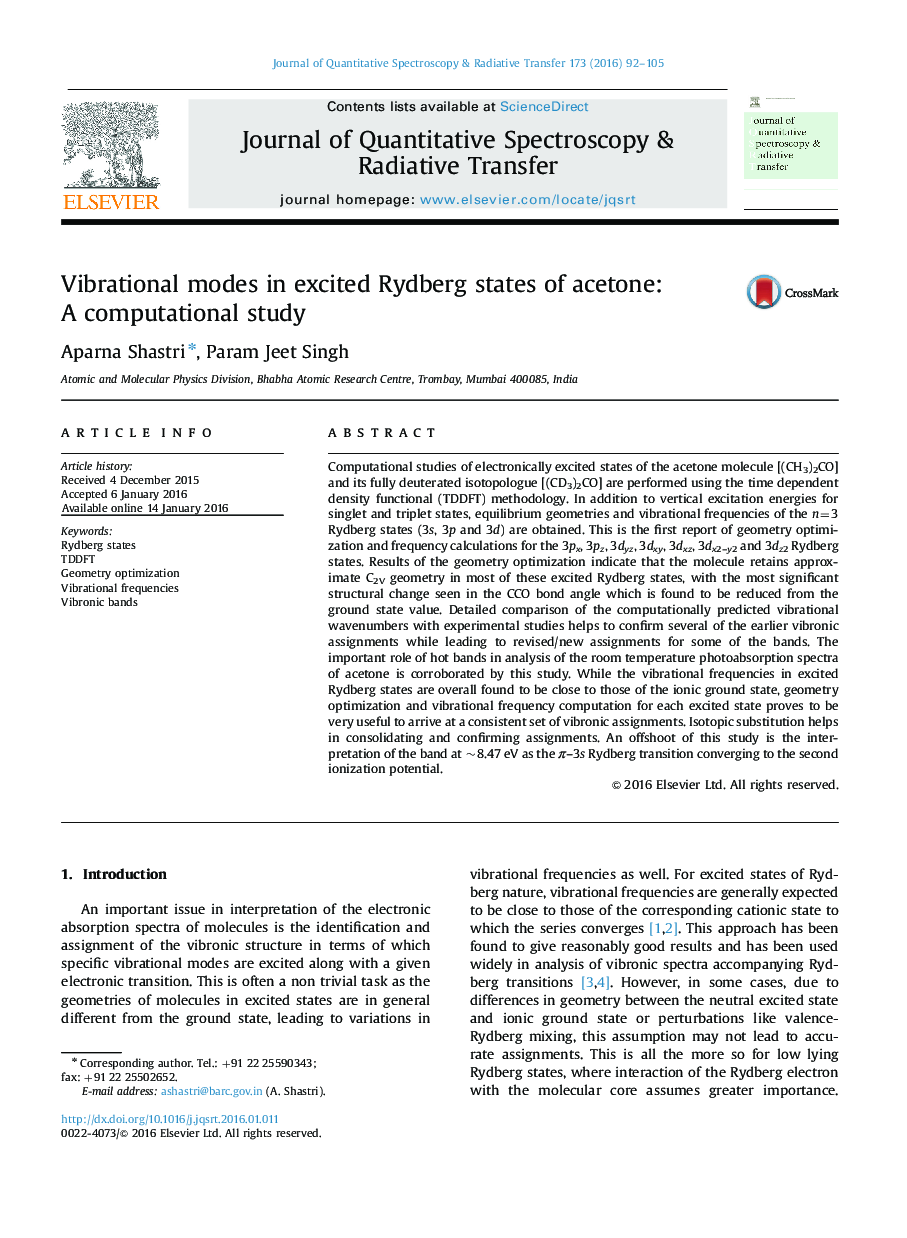| کد مقاله | کد نشریه | سال انتشار | مقاله انگلیسی | نسخه تمام متن |
|---|---|---|---|---|
| 5427727 | 1508642 | 2016 | 14 صفحه PDF | دانلود رایگان |
- TDDFT based computational studies of excited states of acetone-h6 and -d6.
- Vertical excitation energies for singlet and triplet states.
- Geometry optimization and vibrational frequencies of n=3 Rydberg states.
- Comparison with experimental data; confirmation/revision of vibronic assignments.
- Interpretation of the band at ~8.47Â eV as the Ï-3s Rydberg transition.
Computational studies of electronically excited states of the acetone molecule [(CH3)2CO] and its fully deuterated isotopologue [(CD3)2CO] are performed using the time dependent density functional (TDDFT) methodology. In addition to vertical excitation energies for singlet and triplet states, equilibrium geometries and vibrational frequencies of the n=3 Rydberg states (3s, 3p and 3d) are obtained. This is the first report of geometry optimization and frequency calculations for the 3px, 3pz, 3dyz, 3dxy, 3dxz, 3dx2-y2 and 3dz2 Rydberg states. Results of the geometry optimization indicate that the molecule retains approximate C2V geometry in most of these excited Rydberg states, with the most significant structural change seen in the CCO bond angle which is found to be reduced from the ground state value. Detailed comparison of the computationally predicted vibrational wavenumbers with experimental studies helps to confirm several of the earlier vibronic assignments while leading to revised/new assignments for some of the bands. The important role of hot bands in analysis of the room temperature photoabsorption spectra of acetone is corroborated by this study. While the vibrational frequencies in excited Rydberg states are overall found to be close to those of the ionic ground state, geometry optimization and vibrational frequency computation for each excited state proves to be very useful to arrive at a consistent set of vibronic assignments. Isotopic substitution helps in consolidating and confirming assignments. An offshoot of this study is the interpretation of the band at ~8.47Â eV as the Ï-3s Rydberg transition converging to the second ionization potential.
Journal: Journal of Quantitative Spectroscopy and Radiative Transfer - Volume 173, April 2016, Pages 92-105
